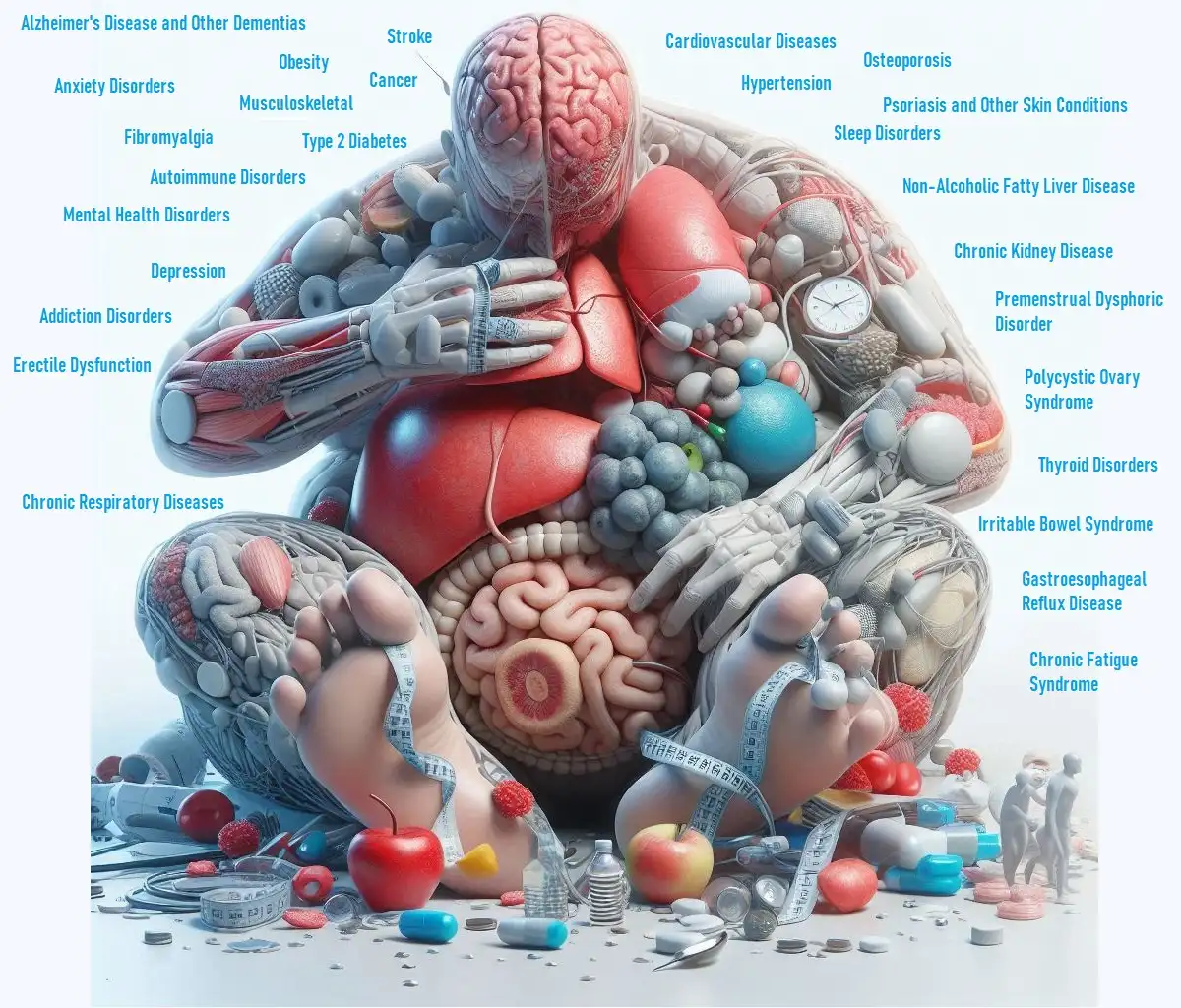
Obesity isn’t just a matter of eating too much or exercising too little. It’s a complex condition influenced by a range of factors, from genetics to environmental triggers. Let’s dive into the key components that contribute to obesity, including how genetics play a role, the impact of gut bacteria, the effects on adolescents, endocrine disruptors, and joint health concerns. This comprehensive guide will help you understand these elements and their interconnected impacts.
Key Takeaways
- Genetics play a crucial role in your risk of obesity.
- Gut microbiota significantly influences body weight and fat storage.
- Obesity in adolescents can lead to long-term health issues.
- Endocrine disruptors can interfere with weight management.
- Obesity increases the risk of joint problems and arthritis.
Genetic Factors in Obesity
Your genes can make a big difference in how your body stores fat and processes energy. Some people have a genetic makeup that makes them more susceptible to gaining weight, even if they eat the same amount as others. This is because certain genes affect how your body burns calories and stores fat.
How Genes Influence Obesity
Genes can affect obesity in several ways:
- Metabolism: Some people have a slower metabolism, meaning they burn fewer calories at rest.
- Appetite Control: Genetic variations can influence hunger and satiety signals, leading to overeating.
- Fat Storage: Your genes can determine where your body stores fat, whether it’s in the abdomen, hips, or thighs.
For instance, the FTO gene has been linked to higher body mass index (BMI) and obesity risk. This gene influences your appetite and how your body stores fat.
Impact of Gut Microbiota on Obesity
Your gut is home to trillions of bacteria, collectively known as the gut microbiota. These microorganisms play a surprising role in your body’s weight regulation. They help digest food, absorb nutrients, and even influence your appetite.
How Gut Bacteria Affect Weight
- Nutrient Absorption: Certain gut bacteria help break down complex carbohydrates, leading to increased calorie absorption.
- Fat Storage: Gut microbiota can affect how your body stores fat. An imbalance in these bacteria can lead to higher fat storage.
- Appetite Regulation: Gut bacteria produce chemicals that can influence hunger hormones, affecting how much you eat.
A study published in Nature found that people with obesity had different gut microbiota compared to those with a normal weight. This suggests that gut health is closely tied to weight management.
Obesity in Adolescents: Long-term Health Effects
Obesity during adolescence isn’t just a phase—it can have lasting impacts on health. Teenagers who are obese are at a higher risk of developing chronic conditions later in life.
Long-term Effects of Adolescent Obesity
- Type 2 Diabetes: Obese adolescents are more likely to develop insulin resistance, leading to type 2 diabetes.
- Heart Disease: High blood pressure and high cholesterol, common in obese teens, increase the risk of heart disease.
- Joint Problems: Extra weight puts stress on joints, leading to problems like arthritis.
Real-life example: A study from the American Journal of Preventive Medicine found that obese teenagers had a significantly higher risk of cardiovascular diseases and type 2 diabetes in adulthood compared to their peers.
Endocrine Disruptors and Obesity
Endocrine disruptors are chemicals that interfere with hormone systems. They can be found in various products, from plastics to pesticides. These chemicals can disrupt the balance of hormones that regulate your appetite, metabolism, and fat storage.
How Endocrine Disruptors Affect Obesity
- Hormonal Imbalance: These chemicals can mimic or block hormones, disrupting normal body functions related to weight regulation.
- Increased Fat Storage: Some endocrine disruptors can promote fat accumulation, contributing to obesity.
- Metabolic Issues: Disruptors may affect how your body processes sugars and fats, leading to weight gain.
For example, BPA (bisphenol A), found in many plastics, has been linked to increased fat accumulation and obesity in several studies.
Obesity and Joint Health: Arthritic Risks
Being overweight puts extra pressure on your joints, especially the knees, hips, and lower back. This added stress can lead to joint pain and increase the risk of arthritis.
How Obesity Affects Joint Health
- Increased Pressure: Extra body weight puts more strain on weight-bearing joints, accelerating wear and tear.
- Inflammation: Obesity often leads to chronic inflammation, which can worsen joint pain and contribute to conditions like osteoarthritis.
- Reduced Mobility: Excess weight can limit physical activity, leading to weaker muscles and less support for your joints.
Case study: Research published in the Journal of Bone and Joint Surgery showed that people with obesity are more likely to develop osteoarthritis and experience greater pain and disability compared to those with a healthy weight.
Conclusion
Understanding the multifaceted nature of obesity is essential for addressing this growing health concern. From genetic predispositions to the impact of gut bacteria and endocrine disruptors, each factor plays a role in how obesity develops and its consequences. Additionally, the effects on adolescents and joint health further highlight the need for a comprehensive approach to prevention and treatment.
By considering these factors, you can better understand the complexity of obesity and take informed steps towards managing your health. Whether through lifestyle changes, medical interventions, or a combination of both, addressing these underlying issues can make a significant difference in achieving and maintaining a healthy weight.









